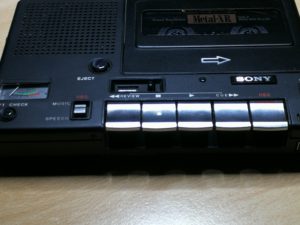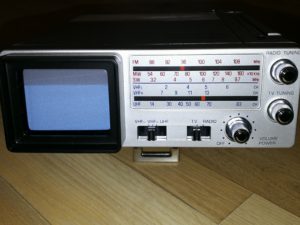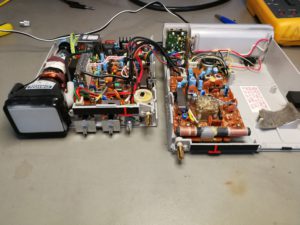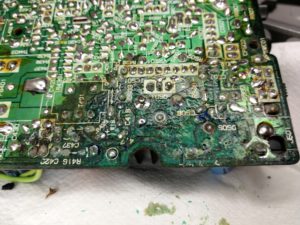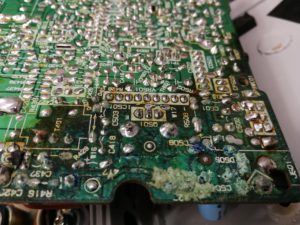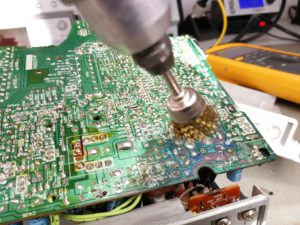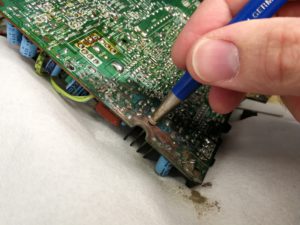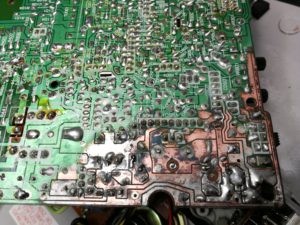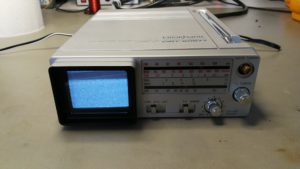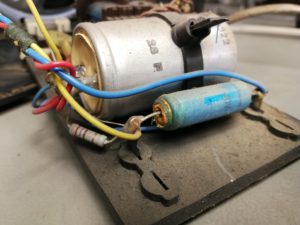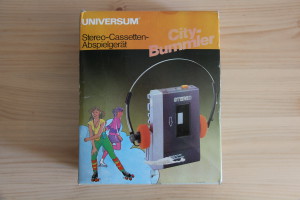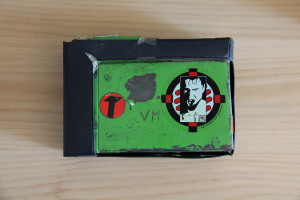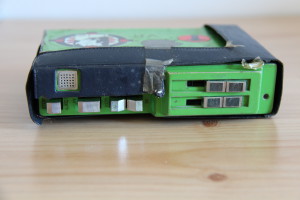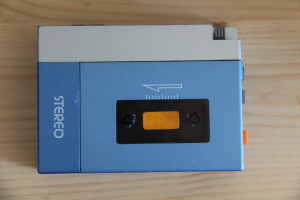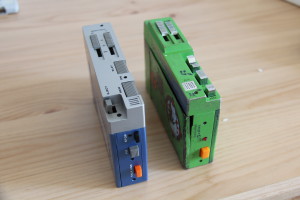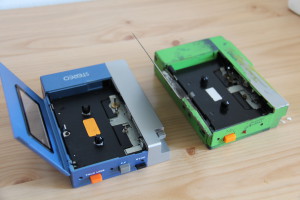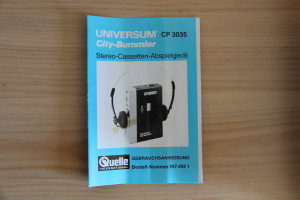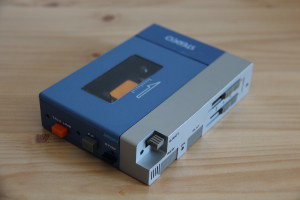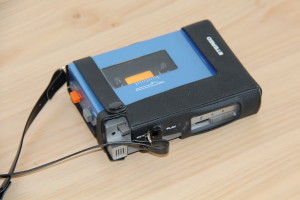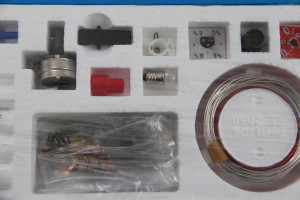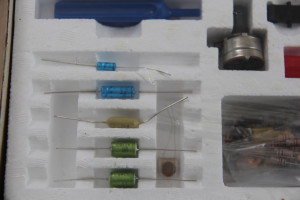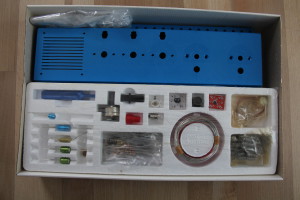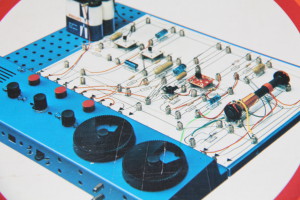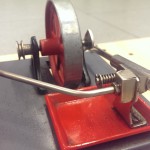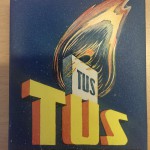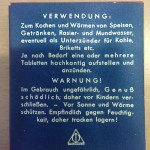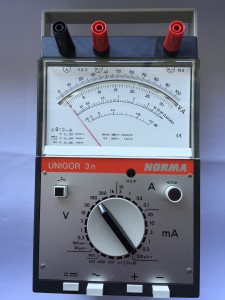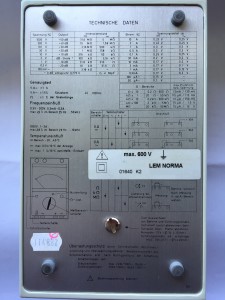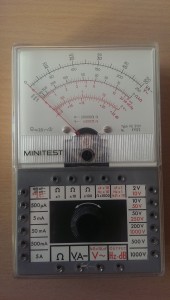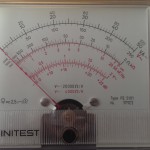![]()
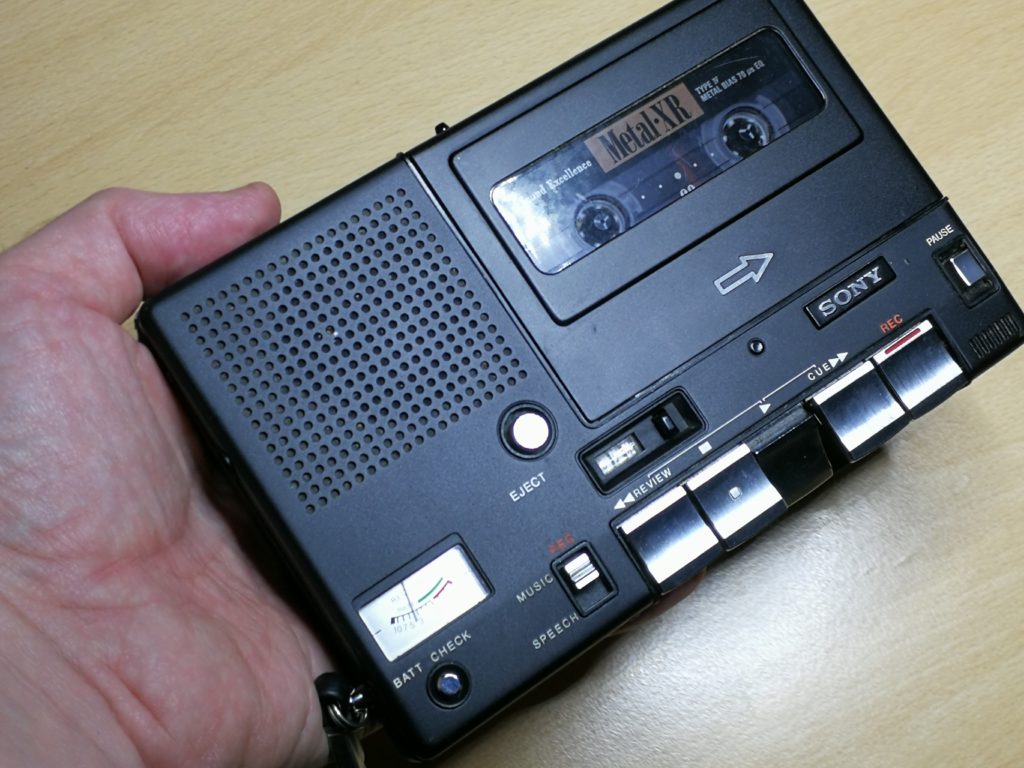
The Sony TC-150 is the newest, old member of the collection. Once again purchased as a defect device, this baby found a place in the workshop. After a quick inspection, it was immediately clear that the ravages of time were gnawing and, as is often the case, the drive belts became brittle or decomposed. Otherwise, the device is in perfect condition, hardly any scratches and damage to the case. The battery compartment was also clean. There are four belts of different lengths in the device.
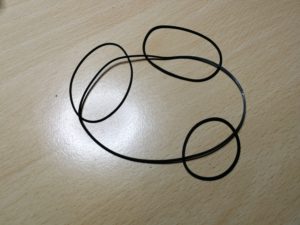
Suitable replacement belts can be obtained, for example, from a large electronics store that is represented in Austria by six megastores. You will quickly find what you are looking for under the name “drive belt range” and “1.1mm edge length”. Replacing the straps is less quick. Here you should take at least half an hour and carefully take the drive apart.
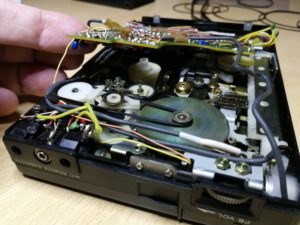 The main circuit board must be removed in order to access the pulleys or to be able to unscrew them further. However, this is only possible if some lines are unsoldered. Only then you can fold up the board. Once that’s done, you can unscrew the retaining plates above the pulleys. They form the backing of the flywheels (capstan shaft). On this occasion, it is advisable to check the capstan shaft for dirt (due to belt wear) and damage, or it should be cleaned. The pressure roller must not be neglected either. In this model, both were in great condition. The pinch roller was neither glazed and brittle, nor contaminated with tape wear or shrinked. So I could put on the new straps. The main belt from the engine is put on with a rotation of 90 °. Here you should note the installation position of the old belt, if it still exists, or at least do a short test run after fitting the new belt.
The main circuit board must be removed in order to access the pulleys or to be able to unscrew them further. However, this is only possible if some lines are unsoldered. Only then you can fold up the board. Once that’s done, you can unscrew the retaining plates above the pulleys. They form the backing of the flywheels (capstan shaft). On this occasion, it is advisable to check the capstan shaft for dirt (due to belt wear) and damage, or it should be cleaned. The pressure roller must not be neglected either. In this model, both were in great condition. The pinch roller was neither glazed and brittle, nor contaminated with tape wear or shrinked. So I could put on the new straps. The main belt from the engine is put on with a rotation of 90 °. Here you should note the installation position of the old belt, if it still exists, or at least do a short test run after fitting the new belt.
If everything turns again (and especially in the right direction) then the assembly can be done. Solder the wires again, screw the circuit board and the repair is done. To have this man a test cassette, here are some parameters, such as tape speed or the tracking of the tape head, which are given and adjusted if necessary.
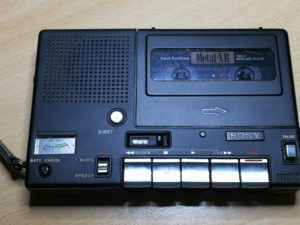
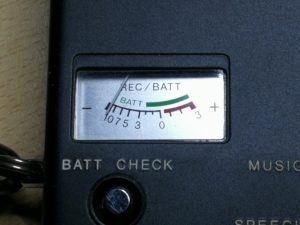
Technical data of the SONY TC-150:
Vendor: Sony
Type: TC-150 (Europa) bzw. BT-50 USA
year of production: ca. 1977 – 1982 (according to various sources)
Modell kind: portable Cassette Corder
Hauptprinzip: NF-Audio
Magnetbandaufzeichung/Wiedergabe
tape speed: 4.8cm/s
heads: 1 recording-/playback head
1 earase head (Permanentmagnet)
semiconductors: 8 tranistors, 5 diodes, 2IC´s, 1 FET
Power : Outputpower: max 360mW
Powerconsumption : max 9W
Supplyvoltage: battery 4×1.5V AA, or accupack BP28
12V Caradapter bzw. 6V 4W wallplug
operationtime: 2.5h at continous recording
Speaker: dynamic 5cm Lautsprecher
Abmessungen: 174 x 29.5 x 113 mm (BxHxT)
weight: ca. 769g

